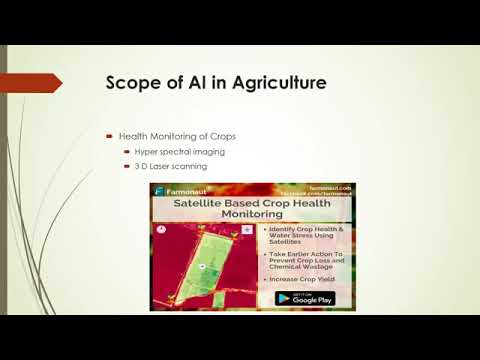Preserving Legacy: Farmworker Movement National Park to Honor Civil Rights and Labor History in California and Arizona
“The proposed farmworker movement national park would span two states: California and Arizona.”
In a groundbreaking move to honor the rich tapestry of civil rights and labor history in the United States, we are excited to share news of a proposed national park that promises to enshrine the legacy of the farmworker movement. This initiative, which seeks to establish the César E. Chávez and the Farmworker Movement National Historical Park, represents a significant step towards recognizing the contributions of agricultural workers and the ongoing fight for social justice in our nation’s fields.
As we delve into this important topic, let’s explore how this proposed park aims to preserve key sites in California and Arizona, highlighting the enduring impact of organized movements in addressing inequality and improving working conditions. Join us as we uncover the profound influence of social justice movements on American culture and the importance of recognizing diverse histories within our national park system.
The Vision Behind the Farmworker Movement National Park
The proposal for the César E. Chávez and the Farmworker Movement National Historical Park is more than just a tribute to a single individual; it’s a recognition of a collective struggle that has shaped the agricultural landscape of America. This initiative seeks to integrate farm workers’ rights and social justice in agriculture into the national park system, creating a lasting testament to the power of grassroots organizing and community advocacy.
By focusing on marginalized voices and the ongoing fight for equality, the park would serve as a powerful reminder of the challenges faced by farmworkers and the progress made through tireless advocacy. It’s an opportunity to showcase agricultural worker advocacy, community stories, and labor rights historical sites, enriching the diversity of America’s protected areas.

The Legislative Journey
On César Chávez Day, a significant step was taken towards making this vision a reality. U.S. Senator Alex Padilla (D-Calif.) and Representative Raul Ruiz (D-Calif.-25) introduced bicameral legislation aimed at establishing the César E. Chávez and the Farmworker Movement National Historical Park. This move, supported by Senator Adam Schiff (D-Calif.), underscores the importance of preserving the legacy of Chávez and the broader farmworker movement.
The proposed legislation seeks to preserve key sites in California and Arizona that are closely tied to the legacy of Chávez and the farmworker movement. These locations would serve as anchors for education, reflection, and ongoing dialogue about the importance of workers’ rights and social justice in the agricultural sector.
César Chávez: A Legacy of Advocacy
At the heart of this initiative is the towering figure of César Chávez, a renowned Latino civil rights leader, labor organizer, and community activist. Chávez’s work went far beyond simple advocacy; he was instrumental in securing tangible improvements in the lives of countless workers, particularly in the agricultural sector.
- Fair wages
- Health care access
- Pension benefits
- Housing improvements
These were just some of the critical areas where Chávez’s efforts made a significant impact. His commitment to social justice continues to inspire ongoing movements aimed at addressing inequality and improving the lives of marginalized communities across the nation.
The Importance of Representation in National Parks
While our National Park system offers a broad array of historical and cultural sites, there remains a significant gap in the representation of marginalized groups, including women and communities of color. The proposed César E. Chávez and the Farmworker Movement National Historical Park aims to address this disparity by elevating the stories of farm workers and their struggles for justice and equality.
By broadening the scope of the National Park system, we enrich our collective understanding of America’s diverse history. This initiative not only honors the legacy of César Chávez but also provides a platform for educating the public about the ongoing fight for workers’ rights and social justice in the agricultural sector.
“César Chávez’s legacy in the farmworker movement spans over 50 years of civil rights and labor history.”
The Intersection of Civil Rights and Environmental Stewardship
As a farmworker himself, Chávez had a deep connection to the natural environment. This connection underscores the potential for the proposed park to highlight the intersection of civil rights and environmental stewardship. By preserving these historical sites, we not only honor the human rights aspect of the farmworker movement but also emphasize the importance of sustainable and ethical agricultural practices.
This dual focus aligns well with modern agricultural initiatives that prioritize both social justice and environmental sustainability. For instance, Farmonaut’s carbon footprinting services help agribusinesses monitor and reduce their environmental impact, promoting sustainable farming practices while addressing the broader societal impacts of agriculture.

Voices of Support
The proposal for the César E. Chávez and the Farmworker Movement National Historical Park has garnered strong support from legislators and community leaders alike. Senator Padilla emphasized the importance of commemorating Chávez’s legacy, stating:
“On César Chávez Day, we commemorate the work and legacy of an iconic Latino civil rights leader. His example of defending workers’ rights across the country serves as a blueprint for overcoming some of our nation’s biggest challenges, demonstrating the immense power behind organized movements fighting against injustice.”
Representative Ruiz, who grew up as the son of farmworkers in California’s Coachella Valley, shared a personal connection to the cause:
“Having grown up as the son of farmworkers in the Coachella Valley, I remember the profound hope César Chávez instilled in our communities and farmworkers across the nation. His legacy continues to inspire me to this day. It’s vital that we amplify the voices of communities whose stories are too often left unheard.”
The Proposed Park: A Mosaic of Historical Sites
The César E. Chávez and the Farmworker Movement National Historical Park would encompass numerous locations associated with Chávez and the broader farmworker movement. These sites would serve as touchstones for visitors to engage with the history of the movement and its ongoing relevance to contemporary issues of labor rights and social justice.
Some of the key locations that could be included in the park are:
- The Forty Acres in Delano, California – the first headquarters of the United Farm Workers (UFW)
- La Paz in Keene, California – where Chávez lived and worked in his later years
- The Santa Rita Center in Phoenix, Arizona – site of Chávez’s 1972 fast for justice
- Various sites along the route of the historic 1966 Delano to Sacramento march
Each of these locations holds significant historical value, offering visitors a tangible connection to the struggles and triumphs of the farmworker movement.
Educational Opportunities and Public Engagement
The proposed national historical park would offer a wealth of educational opportunities for visitors of all ages. By preserving these important sites and the stories associated with them, the park would serve as a living classroom, offering insights into:
- The history of labor organizing in the agricultural sector
- The challenges faced by farmworkers, past and present
- The intersection of civil rights, labor rights, and environmental justice
- The power of nonviolent protest and community organizing
These educational initiatives could be further enhanced by incorporating modern agricultural technologies that continue to shape the industry. For example, Farmonaut’s traceability solutions could be used to demonstrate how technology is being leveraged to ensure fair practices and transparency in agricultural supply chains, building on the legacy of the farmworker movement.
Challenges and Considerations
While the proposal for the César E. Chávez and the Farmworker Movement National Historical Park has garnered significant support, it’s important to acknowledge the challenges that lie ahead. Some of the key considerations include:
- Funding allocation for the establishment and maintenance of the park
- Balancing historical preservation with modern agricultural practices in the surrounding areas
- Ensuring accurate and comprehensive representation of diverse perspectives within the farmworker movement
- Addressing potential concerns from local communities about increased tourism and its impacts
Addressing these challenges will require ongoing dialogue and collaboration between legislators, community leaders, and stakeholders in the agricultural sector.
The Broader Impact on National Park Diversity
The establishment of the César E. Chávez and the Farmworker Movement National Historical Park would represent a significant step towards diversifying the stories told within our national park system. By highlighting the experiences of farmworkers and the broader Latino community, this initiative aligns with growing calls for more inclusive representation in our national monuments and parks.
This move towards greater diversity in our protected areas reflects a broader societal recognition of the contributions made by various communities to the American story. It also provides an opportunity to explore how different cultural perspectives have shaped our relationship with the land and natural resources.
Connecting Past and Present: The Ongoing Relevance of the Farmworker Movement
While the proposed national historical park would primarily focus on preserving the legacy of past struggles, it’s crucial to recognize the ongoing relevance of the farmworker movement. Many of the issues championed by César Chávez and his contemporaries continue to resonate in today’s agricultural landscape:
- Fair wages and working conditions for agricultural laborers
- Access to healthcare and other essential benefits for farmworkers
- The impact of pesticides and other agricultural chemicals on worker health and the environment
- The rights of migrant workers and immigration reform
By highlighting these ongoing challenges, the park can serve as a bridge between historical struggles and contemporary efforts to improve conditions in the agricultural sector. This connection underscores the importance of continued advocacy and innovation in addressing the needs of farmworkers and rural communities.
In this context, modern agricultural technologies play a crucial role in advancing the goals of the farmworker movement. For instance, Farmonaut’s crop loan and insurance services help provide financial security and risk management tools for farmers, addressing some of the economic challenges that have long been central to the farmworker movement’s concerns.
Timeline of Key Events in the Farmworker Movement
| Year | Event | Significance |
|---|---|---|
| 1962 | Founding of the National Farm Workers Association | Laid the groundwork for organized labor in agriculture |
| 1965 | Delano Grape Strike | Major labor action that brought national attention to farmworkers’ struggles | 1972 | Formation of the United Farm Workers (UFW) | Consolidated the farmworker movement under a single, powerful union |
| 1975 | California Agricultural Labor Relations Act | Landmark legislation granting farmworkers the right to unionize |
| 2023 | Proposal for Farmworker Movement National Park | Recognition of the movement’s historical importance and ongoing relevance |
The Role of Technology in Modern Agriculture and Social Justice
As we reflect on the historical significance of the farmworker movement, it’s important to consider how modern technology is shaping the future of agriculture and labor rights. Innovations in agricultural technology not only improve efficiency and productivity but also have the potential to address many of the concerns raised by the farmworker movement.
For example, Farmonaut’s fleet management solutions help agricultural businesses optimize their operations, potentially leading to better working conditions and more sustainable practices. Similarly, advanced monitoring and data analysis tools can help ensure compliance with labor laws and safety regulations, furthering the goals of worker protection championed by Chávez and his contemporaries.
Looking to the Future: The Potential Impact of the National Historical Park
As we anticipate the potential establishment of the César E. Chávez and the Farmworker Movement National Historical Park, it’s worth considering the long-term impacts this initiative could have:
- Increased public awareness of farmworkers’ rights and challenges
- Greater recognition of the contributions of Latino Americans to U.S. history
- Enhanced educational resources for students and researchers studying labor history and civil rights
- Economic benefits for local communities through increased tourism
- A renewed focus on ongoing issues in agricultural labor and potential solutions
By preserving these important historical sites and stories, we not only honor the past but also provide a foundation for addressing current and future challenges in the agricultural sector. This aligns with the goals of innovative agricultural technologies, such as those offered by Farmonaut, which aim to create a more sustainable, equitable, and productive agricultural industry.
For instance, Farmonaut’s large-scale farm management tools can help agricultural businesses operate more efficiently while also ensuring better oversight of labor practices and environmental impacts. This fusion of historical awareness and technological innovation represents a promising path forward for the agricultural sector.
Conclusion: Honoring the Past, Shaping the Future
The proposed César E. Chávez and the Farmworker Movement National Historical Park represents a significant step towards recognizing and preserving a crucial chapter in American civil rights and labor history. By honoring the legacy of César Chávez and the broader farmworker movement, we not only pay tribute to past struggles but also reinforce the ongoing importance of workers’ rights, social justice, and equitable agricultural practices.
As we look to the future, it’s clear that the values championed by the farmworker movement continue to resonate in our modern agricultural landscape. The proposed national historical park serves as a bridge between this rich history and the ongoing efforts to create a more just and sustainable agricultural sector.
We encourage our readers to stay informed about the progress of this important initiative and to consider how they can support the ongoing work of agricultural worker advocacy and social justice in their own communities. By combining historical awareness with modern technological innovations, we can work towards a future that honors the legacy of the farmworker movement while embracing the possibilities of 21st-century agriculture.
FAQ Section
- What is the César E. Chávez and the Farmworker Movement National Historical Park?
It’s a proposed national park that would preserve key sites related to César Chávez and the farmworker movement in California and Arizona, honoring their contributions to civil rights and labor history. - Who introduced the legislation for this national historical park?
U.S. Senator Alex Padilla (D-Calif.) and Representative Raul Ruiz (D-Calif.-25) introduced the bicameral legislation, with support from Senator Adam Schiff (D-Calif.). - Why is this national historical park important?
It would recognize the contributions of farmworkers to American history, address the lack of representation of marginalized groups in the national park system, and provide educational opportunities about labor rights and social justice. - What locations might be included in the park?
Potential sites include The Forty Acres in Delano, California; La Paz in Keene, California; the Santa Rita Center in Phoenix, Arizona; and various locations along the route of the 1966 Delano to Sacramento march. - How does this initiative relate to current agricultural issues?
The park would highlight ongoing challenges in the agricultural sector, such as fair wages, working conditions, and the rights of migrant workers, connecting historical struggles to contemporary efforts for improvement.
Earn With Farmonaut: Affiliate Program
Earn 20% recurring commission with Farmonaut’s affiliate program by sharing your promo code and helping farmers save 10%. Onboard 10 Elite farmers monthly to earn a minimum of $148,000 annually—start now and grow your income!
Farmonaut Subscriptions







